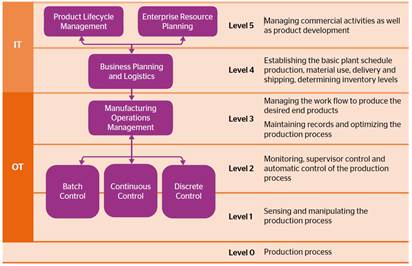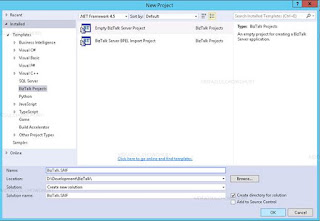How SharePoint Can Benefit Your Enterprise
Business Needs
· Information Worker
o Effective, consistent interface across business applications
o Immediate productivity
o Flexible, consistent user access
· IT Management
o Easy-to-deliver Web capabilities
o Simplified platform and content management
o Seamless access to business data
· Organization
o Strategic platform for Internet, extranet, and internet delivery
o Cost-effective content delivery
o Increased productivity
Internal Business Needs
· Connect and empower users
o Collaboration
o Building business communities and project groups
· Manage total cost of ownership
o Infrastructure
o Management
o Training
· Respond to business needs
o Change
o New opportunities
External Business Needs
· Maximize Internet opportunities
o Agile information distribution
o Building customer relationships
o Building brand
· Work seamlessly with partners
o Streamlining data accessibility
o Creating flexible shared systems
o Managing security
What's SharePoint?
· The business collaboration platform for the enterprise and the web
· Allows individuals in an organization to easily create and manage their own collaborative Web sites
· Simplifies how people find and share information across boundaries, and enabling better informed decisions
· Seamlessly integrates with Windows and MS Office
· Does not refer to a specific product or technology
· Using the word "Microsoft SharePoint" is like using the word "Microsoft Office"
· Refers to several aspects of Web-based collaborative solutions
SharePoint's Capabilities
· Enhance Document Management
· Promote better collaboration
· Improve reporting
· Automate business processes
· Integrate with existing tools
SharePoint as an Organizational Platform
· Individual groups can have a collaborative web site
· Access can be limited to the team and appropriate stakeholders
· Relevant information can be centrally stored and maintained
· Communications can be streamlined
· Relatively easy to use
o IT intervention is minimal
o Based on familiar tools and technologies: Web, Windows, Microsoft Office
· Technologies: Web, Windows, Microsoft Office
SharePoint Products
· SharePoint Online: A cloud-based service, hosted by Microsoft, for businesses of all sizes. Instead of installing and deploying SharePoint Server on premises, any business can now simply subscribe to an Office 365 plan, or the standalone SharePoint Online service, and their employees can create sites to share documents and information with colleagues, partners, and customers.
· SharePoint Foundation: The underlying technology for all SharePoint sites. SharePoint Foundation is available for free on premises deployment—in previous versions it was called Windows SharePoint Services. We can use SharePoint Foundation to quickly create many types of sites where we can collaborate on Web pages, documents, lists, calendars, and data.
· SharePoint Server: Organizations can deploy and manage SharePoint Server on premises. It includes all the features of SharePoint Foundation plus additional features and capabilities, such as Enterprise Content Management, business intelligence, enterprise search, personal sites, and Newsfeed.
· SharePoint Designer: A free program for designing, building, and customizing Web sites that runs on SharePoint Foundation and SharePoint Server. With SharePoint Designer, We can create data-rich Web pages, build powerful workflow-enabled solutions, and design the look and feel of the site. The sites we create can range from small project management team sites to dashboard-driven portal solutions for large enterprises.
· SharePoint Workspace: A desktop program that we can use to take SharePoint site content offline and collaborate on the content with others while we are disconnected from the network. While We and other team members are offline, We can make changes to SharePoint content that will eventually synchronize back to the SharePoint site. In SharePoint 2013, SharePoint Workspace was replaced with SkyDrive Pro folder sync.
· SkyDrive Pro folder sync: A desktop program that we can use to sync an offline version of a team site or SkyDrive Pro library to a folder on the computer.
SharePoint Composites
SharePoint Composites enable us to rapidly create solutions by assembling, connecting, and configuring the basic building blocks of functionality available in SharePoint Products 2013, and in many cases, Microsoft Office 2013. A SharePoint Composite combines data, documents, and business process in a useful, productive way.
In most cases, these solutions do not require code. Now there's nothing wrong with writing code. But here's a motto we might live by from now on: "Let's not write code until we have to write code."
In short, a SharePoint Composite is a "do-it-yourself" business solution. A SharePoint Composite could be as simple as a custom Web Page that uses a site list and several connected Web Parts to track mileage in a small business. Or, a SharePoint Composite could be as sophisticated as a corporate-wide absence reporting system connected to a Human Resource database by using Business Connectivity Services. A SharePoint Composite bears close resemblance to the often-used term, "mashup". A mashup is a quick Web application that incorporates data into a simple, visual, and interactive solution. However, the term "composite" emphasizes the breadth and depth of solutions we can build on the SharePoint Products 2013 platform.
Why SharePoint Composites?
To leverage existing investments: Just using out-of-the-box SharePoint Products 2013 saves us time, money, and resources. These are the tangible benefits for which we can readily see the cost savings to the business. But, creating a SharePoint composite can make the workforce more productive. Those are the intangible benefits that affect the bottom line and successfulness every day.
To help eliminate content and data silos: SharePoint Products 2013 is all about connection, collaboration, and helping to create a "shared brain" within the organization. The more we work in a cross-functional manner, the more We utilize the resources We already have, the more We realize the benefits of synergy and unification.
To unlock the value of Line-of-Business (LOB) data: With a SharePoint Composite based on Business Connectivity Services (BCS), We can work with data from other business systems as if the data lived within the SharePoint sites. Create, read, update, delete, and search the data using external content types and external lists. Surface enterprise data in Microsoft Excel 2013 and Microsoft Word 2013. Search across all the valuable business information. Work offline and synchronize the changes when we reconnect by using Microsoft Outlook 2013.
To rapidly create a business solution without dependence on technical staff: We don't need to be a programmer to assemble these building blocks. Without code, we can create highly customized sites and solutions, share data-driven Visio diagrams, and publish Microsoft Access 2013 Access apps. Use Microsoft SharePoint Designer 2013 and Microsoft InfoPath 2013 to design and build declarative solutions based on workflows and forms. We'll be surprised by how many of the business challenges can be resolved with a code-free solution.
Because we're a power user: Sometimes called a citizen developer, power users see colleagues struggling to do their work, think to themselves, "There has to be a better way", and see a problem that requires a solution they can create. Advancement in software, usability, and standards has made this a growing trend.
Because they are IT friendly: Both end users and IT want to tackle that proverbial project backlog and improve the overall business. But, there is a traditional struggle with the paradox of user responsiveness and empowerment versus IT control and governance. SharePoint Composites help resolve this paradox in an effective way. Solutions are visible and integrated into the organization's information infrastructure, and therefore are easier to deploy, manage, maintain, and ensure compliance.
Because they are developer friendly: Starting a new application from scratch is expensive, time-consuming, and risky. Enhancing a familiar, working solution is often a preferred path. From the perspective of a developer, a SharePoint Composite is like a working prototype that lays the foundation for an application, and that now needs to scale up to potentially thousands of users or millions of rows. Perhaps, We only need to add a custom Web Part. Or, we may need to revise the SharePoint Composite as a solution with custom, managed code. Either way, the upgrade path is clear and smooth.
7 Ways SharePoint Can Empower the Organization
#1 Easily Create a Collaborative Site
o Microsoft Windows
o Microsoft Office
o Familiar with web browsing
· Easily define relevant access
o Based on communication needs
· If deployed appropriately, IT does not have to deal with
o Updating content
o Defining account privileges
o Maintaining a document repository
#2 Efficiently Manage Information
· SharePoint provides various tools to effectively centralize
· and manage information
o Schedule
o Documents
o Change Request
o Risk/Issue Log
o Budget
· Document management features
o Information storage
o Check-in/check-out
o Version control
o Content approval
#3 Facilitate Team Collaboration
· Document Collaboration
o Document Workspaces can be used to jointly develop requirements document, reports, templates, etc.
· Tools
o Wikis to document lessons learned
o Discussion boards for offline communication
o Meeting Workspaces to support meetings
#4 Enhance Communication
· Right information for the right person at the right time
o Tasks
o Schedule
o Reports
o Dashboard
· Relevant information access
o Appropriate privileges can be defined based on informational needs
#5 Automate Business Processes
· Common project workflows
o Change Control
o Expense Reimbursement
o Vacation Request
· SharePoint workflows
o Three-State
o Custom workflows
#6 Generate Relevant Reports
· SharePoint can be used to generate relevant
o Interactive summary of a project
o Project tasks information
o Automated alerts
· Dashboards can be created using Web Parts
o Red, Amber, Green (RAG) Status
o Key Performance Indicators (KPI)
o Charts
#7 Integrate with Existing LOB Systems
· Integrate SharePoint with existing data sources
o SQL – based data
o Web Services
o XML
· Non Microsoft enterprise systems
o CRM
o Reporting Tools
References:
What is SharePoint by Microsoft
Document Link: http://office.microsoft.com/en-ca/sharepoint-server-help/what-is-sharepoint-HA010378184.aspx
What is SharePoint By Dux Raymond Sy.




Thanks for sharing this information. I have just signed up for a free SharePoint 2013 site with http://www.cloudappsportal.com
ReplyDeleteGreat Content. It will useful for knowledge seekers. Keep sharing your knowledge through this kind of article.
ReplyDeleteMicrosoft Dynamics CRM Training in Chennai
Sharepoint Training in Chennai
Microsoft Dynamics Training in Chennai
Sharepoint Course in Chennai
CRM Training in Chennai
Sharepoint Admin Training in Chennai
Microsoft Dynamics CRM Training Institutes in Chennai
Sharepoint in Chennai